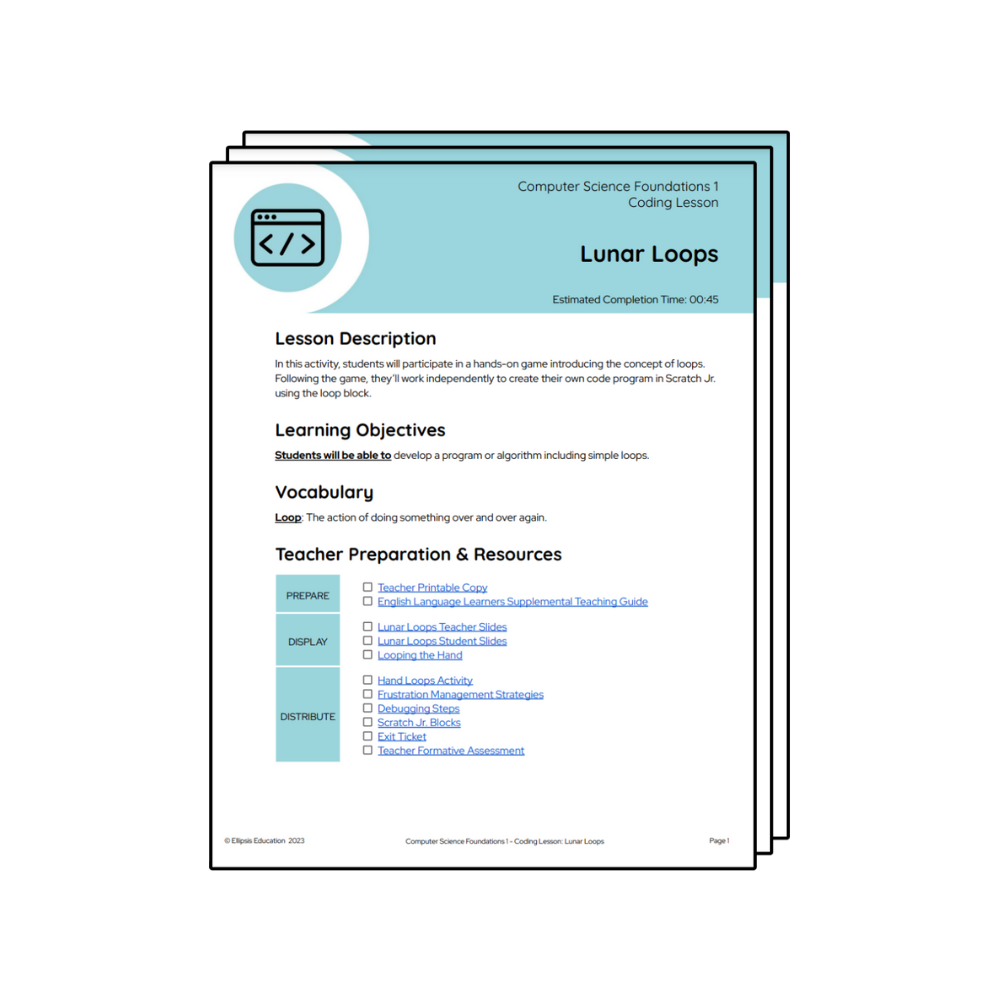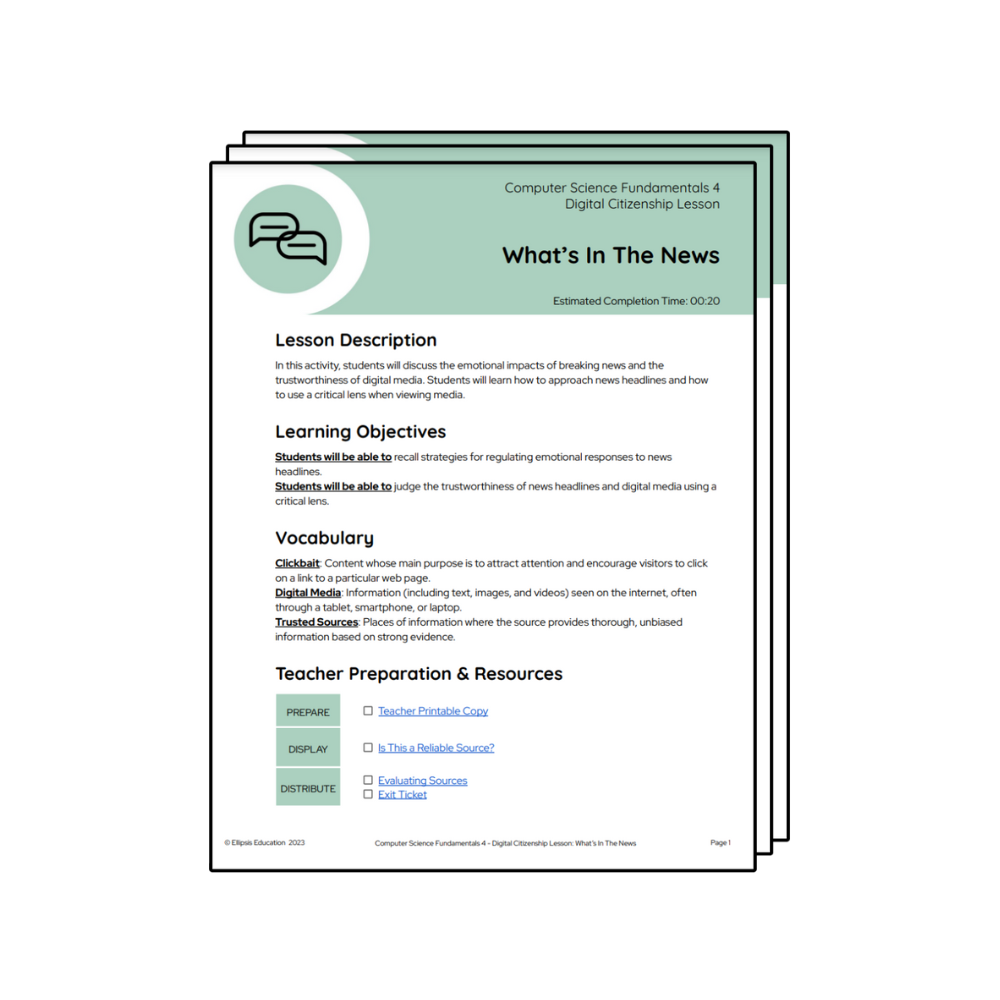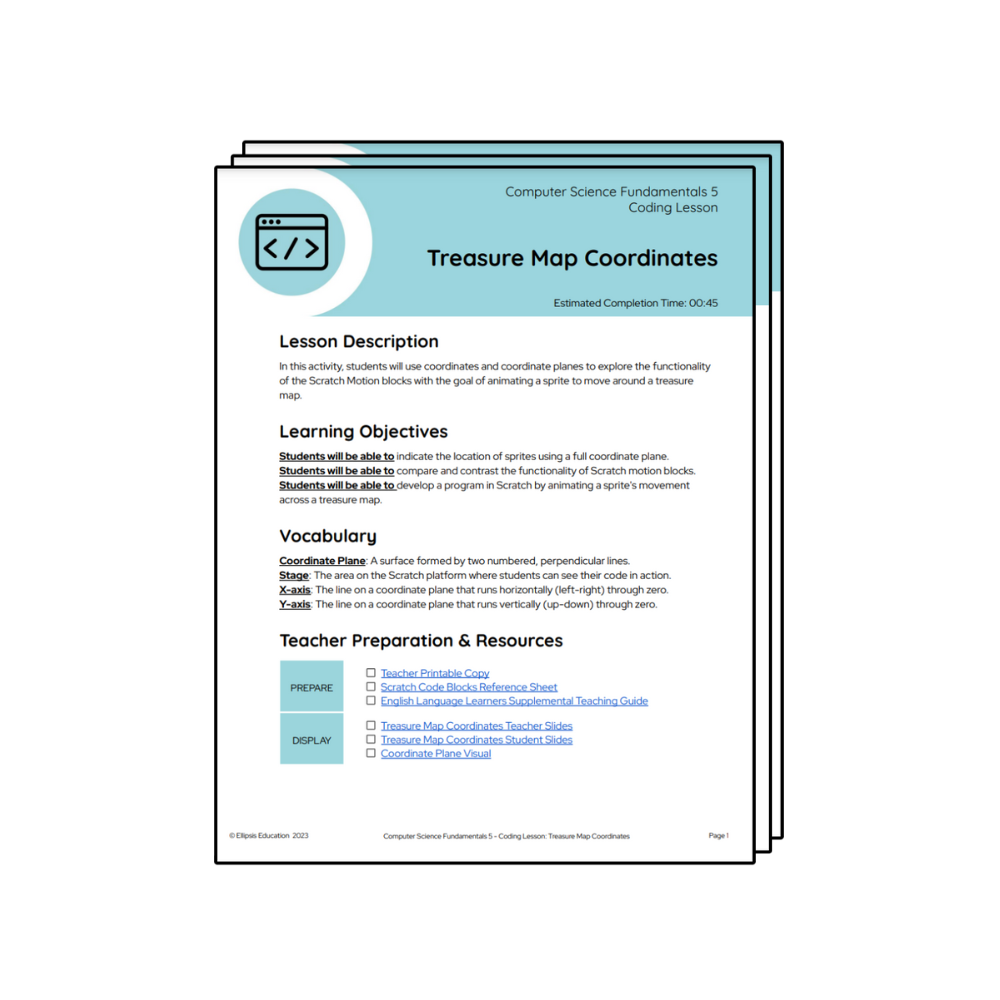Computational Thinking Elementary School
Computational thinking is a crucial skill for students, and computer science is a great way to introduce it. Ellipsis Education helps you get started and be effective with CS, regardless of your experience level. That means you can spend less time gathering materials and more time doing what you do best – teaching.
Computer Science Curriculum Elementary School

Any Teacher Can Teach
From scripted lesson plans to robust training to continuous learning, Ellipsis helps teachers build confidence and capacity.

Everything in One Place
The Curriculum Delivery Platform houses all your computer science lessons – no more piecing together free resources.

Teacher-Led
Just like any reading or math curriculum, Ellipsis leverages your best resource: teachers.

Beyond Coding
Ellipsis lessons develop the attitudes, knowledge, and skills necessary to thrive – in academic settings and beyond.
K-12 Computer Science Curriculum
Our K-12 courses have everything you need to get students going: detailed lesson plans (beyond just coding), pacing guides, standards maps, and ongoing support.
Computer Science Foundations (K-2)
Engage your students with courses that fuel their interest. Coding lessons use ScratchJr, an introductory block coding language, perfect for emergent and early readers.
Computer Science Fundamentals (3-5)
Inspire your students with courses that spark their creativity. Coding lessons use Scratch, a block based coding language, ideal for the transitional and fluent reader.
Computational Thinking Elementary School
Download a free lesson plan from Ellipsis Education to use in your classroom.

Lunar Loops
In Lunar Loops, students will participate in a hands-on game introducing the concept of loops.

What’s in the News?
In What’s in the News, students will discuss breaking news and the trustworthiness of digital media.

Treasure Map Coordinates
In Treasure Map Coordinates, students will code a sprite to move across a treasure map using the coordinate plane.
Ready to teach computational thinking to your elementary students?
Computer science courses from Ellipsis Education can help. We ensure teachers have the curriculum, resources, and support they need to confidently teach CS.
